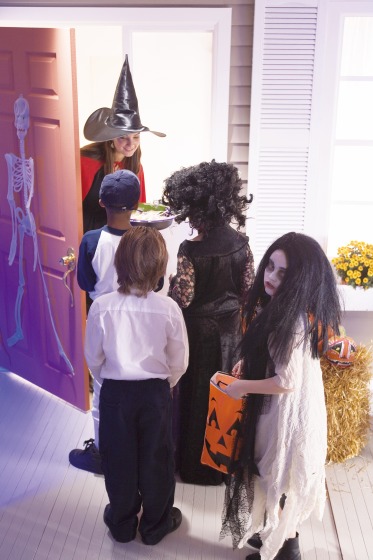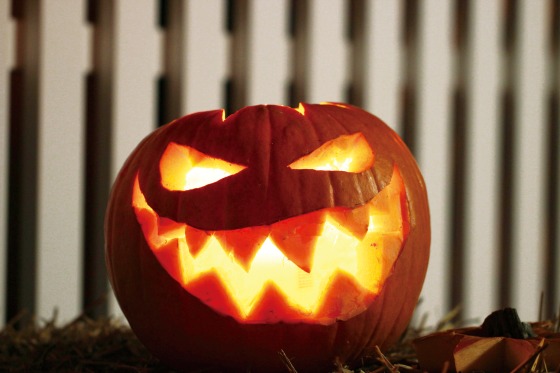10月31日はハロウィーン。イベントが行われたり、ちょっとホラー的だったりする日であることは知っていても、その歴史などはあまり知られていないのではないでしょうか。そこで今回は、フィリピンのハロウィーンの過ごし方など、知っておけばハロウィーン通になれるかも!?な話題をお届けします。
受け継がれる仮装の伝統
ハロウィーンの起源
約2000年以上前、現在のアイルランド、英国、フランス北部に住んでいた古代ケルト人の社会では、10月31日から11月1日にサウィン(ソウィン、Samhain)という祭りを祝っていました。当時夏の終わりと冬の始まりの時期の夜には現世と死者の世界の境界がなくなり、霊が人間の世界に現れると信じられていました。そして、亡くなった家族の霊が帰ってくるだけでなく、悪霊もやってくると考えられていました。そのため、人々は焚火をし、動物の皮で作った服で仮装して邪悪な霊を追い払い、家畜や作物を供えて神に感謝し、間もなくやってくる冬の間の無事を祈りました。このようにサウィン祭は、古代ケルト人が夏から冬への季節の移り変わる時期に、死者の霊を迎え、悪霊を退散させる儀式でした。
7~8世紀、ケルト人社会にキリスト教(ローマ・カトリック)が広まると、11月1日はAll Hallows’ Day / All Saints’ Day(諸聖人の日、万聖節)とされ、前夜10月31日はAll Hallows’ Eve と呼ばれるようになります。Hallowとは「聖なるもの]という意味です。All Hallows’ Eveが Hallowe’en(Evening)となり、やがて Halloween(ハロウィーン)となったといわれています。
ハロウィーン、日本のお盆、中華文化圏のハングリーゴーストの風習には共通するものがありますね。
ハロウィーンになると登場
かぼちゃのランプ
ハロウィーンのシンボルといえば、オレンジ色のかぼちゃをくり抜いて顔のようにした提灯ジャック・オ・ランタン(Jack-o’-lantern) 。古代ケルト人の祭りサウィンにおいて、悪霊を追い払うためカブやじゃがいもなどに怖く見える顔を彫り、提灯として明かりに使ったのが起源とされています。
ジャック・オ・ランタンという呼称は、17世紀のアイルランドの民話に出てくる「けちなジャック(Stingy Jack)」に由来するという説があります。鍛冶職人のジャックは、酒のみでうそつき、悪魔もだましたため死後は、天国にも地獄にも行けず、さまようことに。そんな彼を哀れに思った悪魔が、カブのランタンを与えました。この言い伝えから、ランタンを持ったジャック、ジャック・オ・ランタンという名前が付いたといわれています。
元はカブなどが使われていたジャック・オ・ランタンですが、アイルランドやスコットランドから米国に移住した人たちが、大きくて彫りやすいかぼちゃを使うようになったのが、今も受け継がれています。

20世紀初頭、アイルランドでつくられたカブのジャック・オ・ランタン
A traditional Irish turnip Jack-o’-lantern from the early 20th century. Photographed at the Museum of Country Life, Ireland (Wikimedia Commons CC BY-SA 3.0 rannṗáirtí anaiṫnid)
いたずら防止策だった
「トリックorトリート」
10世紀の終わり、中世ヨーロッパで万聖節(All Saints’ Day)の翌日、11月2日は死者のために祈る「万霊節 、死者の日(All Souls’ Day )」と制定されました。そして、この日は家を訪れた貧しい人々や子どもにパンや菓子を与える「ソウリング」(Souling)という風習がありました。16世紀ごろになると、アイルランドやスコットランドで、子どもが仮装して家を訪れて芸などを披露し、食べ物をもらう「ガイジング(Guising)」 が行われるようになります。1920年代になると、北米にアイルランドやスコットランドからの移民によってガイジングが持ち込まれ、ハロウィーンに子どもがいたずらをするようになりました。そこでいたずらをされないように、キャンディーなどを子どもに与えたのが、「トリックorトリート」の起源といわれています。

October 31 is Halloween. Most people know it as a day of events with a touch of spooky fun, but the meaning behind Halloween isn’t widely known. This time, Navi Manila takes a look at how Halloween is celebrated in the Philippines and Japan, and shares some insights that might just make you a Halloween expert!
The Origins of Halloween
Over 2,000 years ago, the ancient Celts living in what is now Ireland, the United Kingdom, and northern France celebrated a festival called Samhain (pronounced “sow-in”) from October 31 to November 1. They believed that on this night marking the transition from summer to winter, the boundary between the world of the living and the world of the dead became unclear , allowing spirits to cross over.
It was thought that not only the spirits of deceased family members returned, but also evil spirits roamed the earth. To protect themselves, people lit bonfires, wore costumes made from animal hides to drive away harmful spirits, and offered livestock and crops in gratitude to the gods—praying for safety during the coming winter. In this way, Samhain was a ritual in which the Celts both welcomed the spirits of the dead and warded off evil.
By the 7th to 8th century, as Christianity spread through the Celtic regions, November 1 was designated as All Hallows’ Day / All Saints’ Day. The evening before, October 31, came to be called All Hallows’ Eve. The word hallow means “holy”. Over time, All Hallows’ Eve was shortened to Hallowe’en (evening), and eventually became Halloween.
Interestingly, Halloween is similar to Japan’s Obon in mid-August and the Hungry Ghost Festival in Chinese cultural traditions—rituals that honor the spirits of the dead.
The Pumpkin Lanterns of Halloween
The most recognizable symbol of Halloween is the orange pumpkin carved with a spooky face—the Jack-o’-Lantern. Its origins trace back to the Celtic festival of Samhain, when people carved frightening faces into turnips or potatoes to create lanterns meant to ward off evil spirits.
The name Jack-o’-Lantern is believed to come from a 17th-century Irish folktale about “Stingy Jack.” Jack was a blacksmith, a drunkard, and a trickster who even managed to deceive the devil. Because of his deceitful ways, after death he was denied entry to both heaven and hell, left to wander.
Out of pity, the devil gave him a lantern made from a hollowed-out turnip. From this story, he became known as Jack of the Lantern—or Jack-o’-Lantern.
When Irish and Scottish immigrants arrived in America, they found that pumpkins were larger and easier to carve into lanterns than turnips. That’s why today, the pumpkin Jack-o’-Lantern has become an enduring symbol of Halloween.

おなじみのかぼちゃのジャック・オ・ランタン
Pumpkin Jack-o’-Lantern
The Origin of “Trick or Treat”
By the late 10th century, November 2—the day after All Saints’ Day—was established in medieval Europe as All Souls’ Day, a time to pray for the dead. On this day, there was a custom known as “souling,” in which poor people and children would visit homes and receive bread or sweets.
By the 16th century, in Ireland and Scotland, children dressed up in costumes and went door to door to perform songs, poems, or tricks in exchange for food—a practice called “guising.”
When Irish and Scottish immigrants brought guising to North America in the 1920s, it gradually evolved. Children began playing pranks on Halloween night, and in order to avoid mischief, households started giving them treats like candy. This is said to be the origin of Halloween’s familiar phrase: “trick or treat.”















